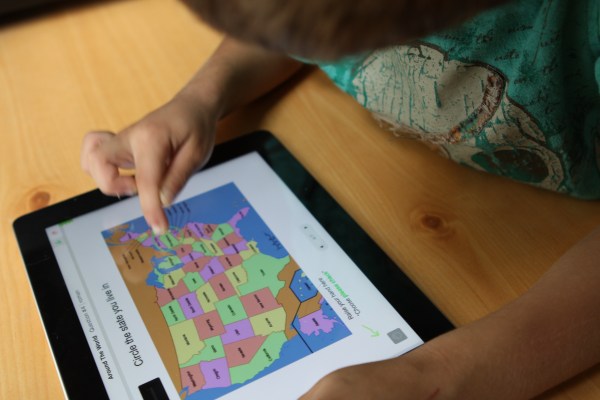Classkick, an edtech startup out of Chicago, has raised $1.7 million to help teachers narrow the achievement gap with its student learning app.
The seed round came from Kapor Capital, Mitch and Freada Kapor’s social impact fund, Lightbank, Yammer founder Adam Pisoni, and Great Oaks Venture Capital.
Kapor has backed a number of edtech startups working to level the playing field for children from low-income families, who now make up the majority of U.S. public school students.
Classkick’s co-founder, Andrew Rowland, understands the grind of teaching in a low-income school district better than most — Rowland taught high school math with Teach for America in Chicago’s west side before he went back to school to study computer science.
“When I was in TFA there were no iPads,” says Rowland, who would pick up the phone and call five parents every day after school to keep students’ families in the loop.
A lack of parental involvement and general academic culture are two of the primary factors responsible for under achievement. “Both of those things are really hard for an insanely overworked teacher in a low-income school to facilitate — but they’re both things that technology can help with tremendously,” says Rowland.
Teachers today can choose from a growing selection of tech products — ClassDojo rewards students for positive behavior, Newsela tailors news-centric content to individual reading levels, and Edmodo provides a social network for teachers and students.
With Classkick, students can get at home more of the individual attention they’re lacking from their teachers during the school day. While their students work through problems on iPads, teachers can monitor the progress of the entire class simultaneously using Classkick’s teacher dashboard. Rather than looking for raised hands and walking from desk to desk, teachers are able to identify who is struggling in real time and provide quick suggestions via iPad.
Granted, an abundance of iPads probably isn’t the first thing you’d expect to see in America’s poorest classrooms. But this is changing.
According to a recent survey by Project Tomorrow, one-third of U.S. students are using school-issued mobile devices. Half of all middle school students and 61% of high school students have access to tablets.
Rowland says Classkick’s long-term goal is to connect all the work a student does in the classroom with the stakeholders in their education — whether that’s their teachers, parents, or peers — but for now, they’re focusing on hiring more engineers and improving user experience.
With users in 75 countries, all 50 U.S. states, and a 25% weekly growth rate since the app’s fall 2014 launch, Classkick is off to a good start.
